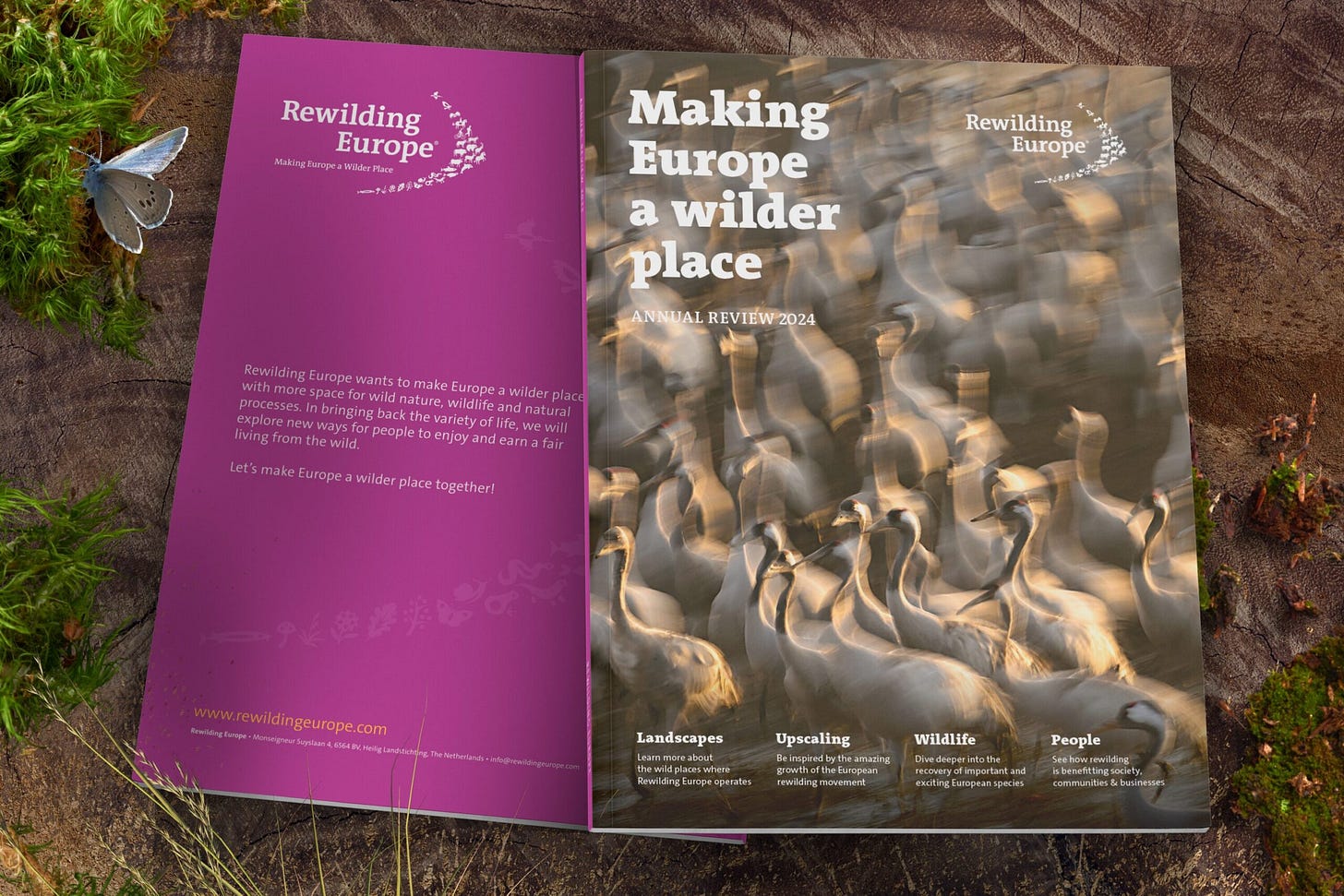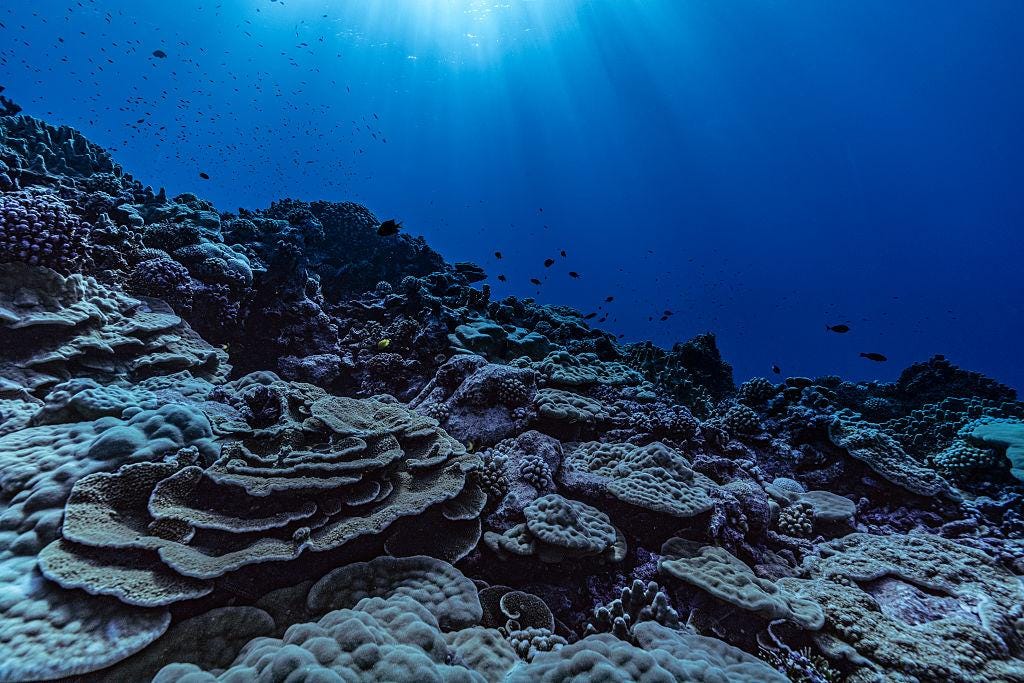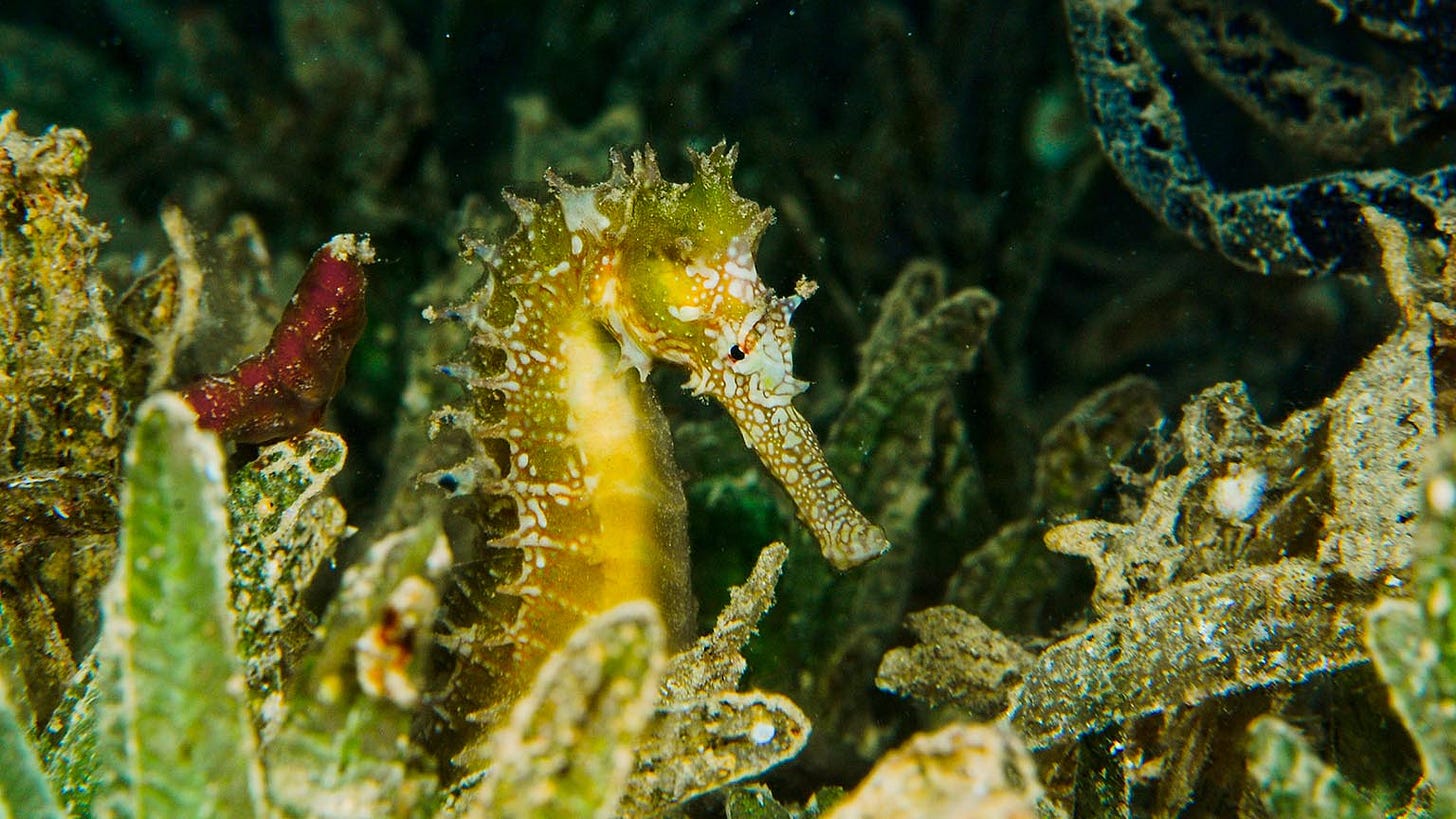Welcome to the latest edition of the Rewilder Weekly! 🦬🌳🐺🌞🌍
Folks, just a heads-up: I’m taking a bit of a summer breather and shall be gone for the next two weeks. Won’t be taking my laptop along as it wouldn’t be much of a breather if I did. Hence - no Rewilder Weekly these next two weeks. Take good care and I hope that you’ll also be able to take a break to walk in nature, to breathe deeply, to not talk, not scroll, not write, not post, to bust clouds and watch birds and spend time alone and spend time with loved ones and do a whole lot of nothing for a while. 🌞🌞🌞
Now then, let’s get on with it - wishing you a good week.
Cheers,
👉 As a reminder: If you come across stories you’d like to see featured in an upcoming edition of the Rewilder Weekly, send them to me and I’ll gladly do what I can.
1) So well deserved, Jeremy!
Jeremy Leggett is the founder and CEO of Highlands Rewilding with its three amazing estates in Scotland. Last week it was announced that Jeremy would be the recipient of the 2025 Blue Planet Prize, an award that comes with a whopping USD 500’000. Unsurprisingly, Jeremy will inject all of it into Highlands Rewilding and its ever growing efforts to rewild, and to do so together with the surrounding rural communities. I’ve been able to visit two of those estates in April - Bunloit and Tayvallich - and loved the people, potential and progress I saw there.
Jeremy didn’t just win the award for his Highlands Rewilding efforts. He’s lived the many-faceted life of an entrepreneur, founded a solar solutions company in the late nineties and has been - and continues to be - a force for tackling greenhouse gas emissions in many ways. Talking about the award, he shares, “These last five years on the nature-recovery frontier I have been totally reliant on the current team and alumni of Highlands Rewilding, our advisors, our local community partners, the conservationist pioneers who inspired us and the many investors who have backed our vision of a breakthrough in helping to reverse biodiversity collapse whilst advancing community prosperity. That vision as yet remains unfulfilled, and hence all the prize money will be injected into Highlands Rewilding as we endeavour to create a rallying point for hope.”
👉 Go here to learn all about Highlands Rewilding
2) Rewilding Europe’s fantastic 2024 review is out
Rewilding Europe has gone from strength to strength ever since its creation way, way back in 2011 when the word and the meaning of rewilding (a term coined by Dave Foreman) was known to few. Today, thanks to Rewilding Europe and countless other organizations around the world, the term and the movement are firmly in the mainstream - and the scale of rewilding both land and sea is increasing with every year.
Co-founder and Executive Director Frans Schepers writes, “Our latest Annual Review is filled with examples of how Rewilding Europe leverages the power and resilience of nature to breathe new life into landscapes and deliver diverse benefits to people – from restoring the natural flow of water through rivers and wetlands to reduce the scale and impact of floods and droughts, to supporting the comeback of influential wildlife species such as European bison, semi-wild horses, and vultures, which can enhance the health, resilience, and value of entire ecosystems. The amazing ability of nature to restore itself, when given time, space, and the right conditions, is what empowers and inspires us.”
👉 Go here to read Rewilding Europe’s 2024 review (read online or order print)
3) A literal sea change - actually, two!
There’s some big news concerning ocean protection - you’ve probably already heard about the UK government’s plans to ban bottom trawling in all of its MPAs (marine protected areas) - so here are two others you might not yet have heard of: French Polynesia has announced the creation of the world’s largest marine protected area.
The MPA will cover the entirety of the country's exclusive economic zone, almost 5 million square kilometers (to put that into comparison with the UK, which would protect 48’000 square kilometers). The ban will restrict extractive practices like deep-sea mining and bottom-trawling. Of that, 1.1 million square kilometers will be designated as a highly or fully protected area, where only traditional coastal fishing, ecotourism, and scientific exploration will be allowed.
The Pacific Island nation of Samoa has detailed a plan (which became law on May 1st) to create nine fully-protected marine areas – effectively safeguarding 30% of its national waters – and the passage of a new law to ensure that 100% of its waters will be sustainably managed by 2030. The plan sees the establishment of 9 new MPAs that cover 30% of Samoa’s ocean - 36’000 square kilometers - an area roughly the size of Taiwan. Any kind of extractive use in these MPAs will be prohibited.
Particularly good news is that all of this will be enforced with steep fines and imprisonment. Mongabay reports, “The nine new MPAs are the first Samoa has created beyond its reefs. They ban activities that could harm marine life or damage marine habitat; fishing, mining and drilling are outlawed. Coral reefs cannot be disturbed, so artificial reefs cannot be installed in these areas. Those fishing illegally could face fines of up to 1 million Samoan tala ($361,400) or imprisonment.”
4) Bottom trawling wreaks havoc 90% of the UK's marine protected areas
Until very recently, most people didn’t know. One one hand, ‘bottom trawling’ wasn’t a common term and on the other, everything that happens beneath the surface of our oceans has been all-too easy to ignore for most until now. In David Attenborough’s latest film Ocean, that one sequence of a camera capturing the bottom trawling destruction has already had, I think, a big impact. This is exactly the kind of work that needs to continue - because it’s not just the UK’s MPAs, of course, this is happening all around the world.
In a new, less than two-minute clip, the Blue Marine Foundation, with the superb aid of Stephen Fry and Theo James, make the mass of bycatch for much of the sealife we choose to eat impossible to forget. There’s also a powerful nudge there - with all of thinking ourselves sustainability-minded - to think more than twice because we accept a sustainability label. If we don’t, if we just go on as we always have, then we’ve gone from well-intentioned to willfully destructive ignorance.
👉 Go here to learn more from the Blue Marine Foundation
5) George Monbiot on an invader called Molinia
Interesting new piece in The Guardian by George Monbiot. He highlights that large swaths of Britain are covered by molinia, or moor grass. These grass deserts (he says they’re essentially terrestrial dead zones, containing far less life than dry deserts) cover much of Wales, he writes. They’re also on “Dartmoor, Exmoor, in the Pennines, Peak District, North York Moors, Yorkshire Dales and many parts of Scotland.” Apparently the takeover of molinia moncultures across Britain - with hundreds of square kilometers’ worth of “molinia deserts” (as he calls them) has barely been studied so far. But his conclusions seem fairly obvious - subsidies led to more farmers getting more grazing animals. This, together with burning moorlands, created the perfect environments for molinia to take over … and for most of the rest of flora and fauna to eventually vanish from those ‘dead zones’.
Monbiot sees straightforward solutions - still massively hindered by the interests of sheep farmers and grouse moor owners: “Rewetting the land, by blocking drains and building bunds and perhaps, as one team is attempting, planting clumps of sphagnum moss among the grass, in order to restore the peat, seems to be the only means of reviving blanket mire. It also makes the land less prone to fire. In other places, we should be encouraging the return of trees, through planting and excluding livestock.”
6) Rewildology’s Project Patagonia podcast
If you’re into rewilding, you’ve no doubt come across Brooke Mitchell’s Rewildology podcast series. She’s recorded her time in Patagonia in eight episodes - and the last one just dropped. These episodes are about pumas, the birth of the Cape Froward National Park, wetlands, forests, glaciers and a final episodes that comes with lots of insights and takeaways. Find all episodes here.
Brooke writes about her Chilean rewilding adventure and the final episode, “After 8 episodes and 1,700 miles through Chile's Route of Parks, this finale reveals something extraordinary: a blueprint for conservation that could transform how we heal our planet. From tracking elusive pumas with renowned scientist Nicolás Lagos to witnessing Darwin's rhea chicks take their first steps toward freedom, this journey through 28 million acres of connected wilderness has shown me that audacious conservation dreams can become reality.”
👉 Go here for the final episode (podcast and notes)
7) “Not 5 minutes into our first outing did we see two wolves scampering up the hillside!”
That’s a quote from Jessica Cochrane’s post about her time in Italy’s Abruzzo mountain range with a group of journalists to experience first-hand the effects of rewilding, the efforts of Rewilding Apennines - and to engage in wildlife spotting, of course.
Such rewilding tours are great adventures for participants, but are key for obvious ecotourism reasons. And naturally participants see nature’s s wonders and learn a great deal. Here a passage from the article, “The tour I was on, with Exodus Adventure Travels, is part of a wider collaborative effort in the region to educate people about the benefits of coexisting with bears and wolves. Despite misconceptions, the Marsican brown bear is rather shy and not at all aggressive (reassuring when you’re sitting on a lonely mountainside armed only with a pair of walking poles). There have never been any bear attacks on humans here, and wolves prefer to steer clear.”
8) The growing illegal trade of seahorses
A few days ago a study by Conservation Biology made the news. It had looked into wildlife seizures from 2010 to 2021 and there discovered that seahorses in the millions (both alive and dead) were hidden in luggage and transported across sixty-two countries. Most of the dead seahorses become traditional medicine in Asia. In the ten years researched, a total of five million seahorses were seized in three hundred seizures … and as with every illegal trade, you know that what’s been seized is only the very tip of the iceberg. It is an entirely reasonable assumption that tens of millions of seahorses are illegally traded every year (estimates go from 70 to 150 million).
Outlawing seahorse trade anywhere in the world would make a big difference. Another threat for seahorses and most other marine animals is the dreaded bycatch. This way millions more seahorses perish and, in this same way, marine ecosystems are continuously attacked, harmed and downgraded to the point of ecosystem collapse. After all these years of banning international ivory trade, elephant poaching is greatly reduced, the ivory business collapsed. It can happen. I can work. And a global seahorse ban wouldn’t just protect this iconic animal: If we protect the seahorse around the world, then by proxy we will also be protecting huge chunks of marine ecosystems.
To conclude this week’s edition, wildlife artist Charlotte Williams shares with us this amazing work of art, a lioness, resting but, clearly, alert. As a member of Artists for Conservation, Charlotte supports conservation groups around the world - and parts of her proceeds go toward conservation efforts.
If you enjoy the Rewilder Weekly …
… consider supporting my work. Your paid subscription ensures that the Rewilder Weekly will always be free for those who cannot afford to pay. Thank you.
That’s it for this week’s edition. And in case you’re eager for some more rewilding insights - here are ways to keep on learning:
connect with these organizations - sign up for newsletters and support them in any way you can;
join these events - conferences, online seminars, rewilding days and weeks to immerse yourself and learn from the experts;
read these books - a selection from Foreman to Macdonald, and from Tree to Daltun, Hetherington and Bowser;
listen to these podcasts - it’s inevitably inspiring when the likes of James Shooter, Ben Goldsmith and Brooke Mitchell talk to the pros in the field;
and check out these resources - explore the principles, ways of funding, research publications and personal ways to start rewilding.
And, of course, connect with and follow the many passionately engaged rewilders. Let’s keep growing the movement! 🦬🌳🐺🌞🌍



















